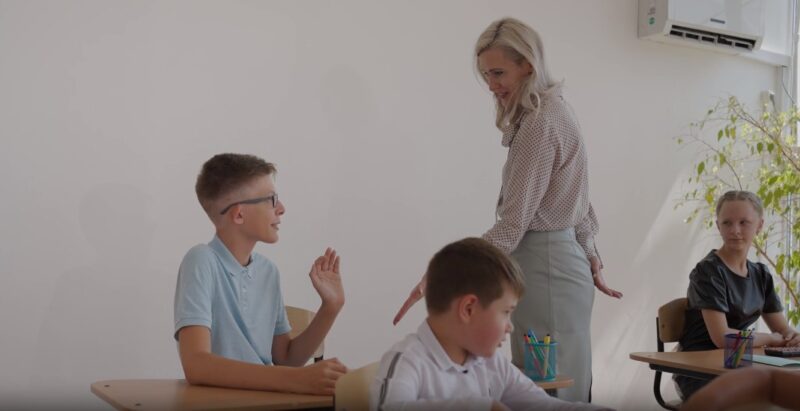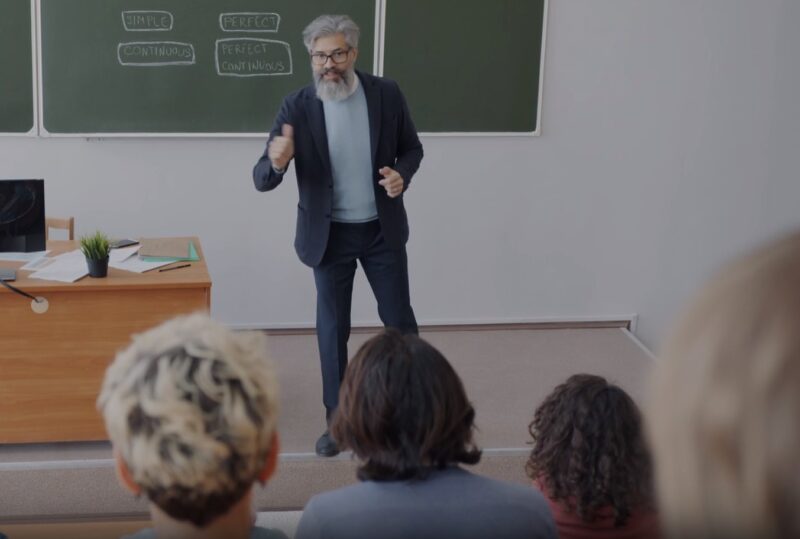What are the best ways to teach and learn? This question has been explored by many educators and researchers over the years. One of the most influential theories that emerged from this inquiry is the distinction between pedagogy and andragogy.
These two terms refer to different approaches to teaching and learning, based on the age and characteristics of the learners. In this blog post, we will define what pedagogy and andragogy are, how they differ from each other, and how they can be applied in various educational settings.
Pedagogy: Science of Teaching Children

This approach to teaching and learning is the oldest and most common one, especially in formal education settings. It comes from the Greek words for “the art of teaching children” and “a slave who escorts children to school”.
It is based on the idea that the learner is dependent on the teacher for guidance and direction, and that the teacher is the authority and the source of knowledge and information. The teacher is responsible for planning, delivering, and evaluating the learning process, and uses methods and strategies that are teacher-centered, such as lectures, demonstrations, drills, and tests.
The learner has little or no prior experience or knowledge of the subject matter, and is motivated by external factors, such as grades, rewards, or punishments. The learner’s goal is to acquire prescribed knowledge and skills that are determined by the teacher or the curriculum. This approach has some advantages and disadvantages as an way to teach and learn.
- provides a clear and structured framework for learning
- ensures that the learner covers the essential and standardized content and skills
- facilitates the transmission and acquisition of knowledge and information
- supports the development of basic and foundational competencies
- does not account for the individual differences and needs of the learners
- lack of learner’s autonomy and self-direction
- fails to encourage the learner’s critical thinking and problem-solving skills
- does not promote the learner’s intrinsic motivation and interest
This approach is suitable for teaching and learning situations where the learner is young, inexperienced, or unfamiliar with the subject matter, and where the teacher has the expertise and the authority to guide and direct the learning process. There is also critical pedagogy with a goal of teaching kids about the world around them.
It is also appropriate for teaching and learning scenarios where the content and skills are fixed, standardized, and predetermined by the teacher or the curriculum. However, this approach is not sufficient or effective for teaching and learning contexts where the learner is mature, experienced, or interested in the subject matter, and where the teacher has to facilitate and support the learning process.
Moreover, it can be inadequate or inefficient for teaching and learning situations where the content and skills are flexible, diverse, and determined by the learner’s needs and goals.
Andragogy: Science of Teaching Adults

This approach to teaching and learning is a relatively new and less common one, especially in formal education settings. It comes from the Greek word for “the art of teaching adults”. It is based on the idea that the learner is independent and self-directed, and that the teacher is a facilitator and a resource.
The teacher is responsible for creating and maintaining a conducive learning environment, and uses methods and strategies that are learner-centered, such as discussions, projects, simulations, and self-assessments. The learner has a lot of prior experience and knowledge of the subject matter, and is motivated by internal factors, such as personal growth, satisfaction, or relevance.
The learner’s goal is to apply and integrate knowledge and skills that are determined by the learner’s needs and interests. This approach has some advantages and disadvantages as a way to teach and learn.
- promotes individual differences and needs of the learners
- fosters the learner’s autonomy and self-direction
- encourages the learner’s critical thinking and problem-solving skills
- promotes the learner’s intrinsic motivation and interest
- requires a high level of learner’s readiness and responsibility
- challenges the traditional role and authority of the teacher
- demands a lot of flexibility and adaptability from the teacher and the learner
- may not suit the learner’s preferred learning style or pace
This approach is suitable for teaching and learning situations where the learner is mature, experienced, or interested in the subject matter, and where the teacher has to facilitate and support the learning process. It is also appropriate for teaching and learning scenarios where the content and skills are flexible, diverse, and determined by the learner’s needs and goals.
However, this approach is not sufficient or effective for teaching and learning contexts where the learner is young, inexperienced, or unfamiliar with the subject matter, and where the teacher has the expertise and the authority to guide and direct the learning process. It is also inadequate or inefficient for teaching and learning situations where the content and skills are fixed, standardized, and predetermined by the teacher or the curriculum.
A Detailed Comparison
The two approaches to teaching and learning, pedagogy and andragogy, have some similarities and differences. They both aim to facilitate the learner’s development and growth, and they both use various methods and strategies to achieve their objectives.
However, they also differ in many aspects, such as the learner’s readiness and motivation, the learner’s experience and self-concept, the learner’s orientation and goals, the teacher’s role and relationship, the learning environment and resources, and the learning process and outcomes.
| Readiness and motivation | The learner is dependent on the teacher for guidance and direction. The learner is motivated by external factors, such as grades, rewards, or punishments. | The learner is independent and self-directed. The learner is motivated by internal factors, such as personal growth, satisfaction, or relevance. |
| Experience and self-concept | The learner has little or no prior experience or knowledge of the subject matter. The learner’s self-concept is that of a dependent and passive recipient of knowledge and information. | The learner has a lot of prior experience and knowledge of the subject matter. The learner’s self-concept is that of an active and responsible participant in the learning process. |
| Orientation and goals | The learner’s orientation is subject-centered. The learner’s goal is to acquire prescribed knowledge and skills that are determined by the teacher or the curriculum. | The learner’s orientation is problem-centered. The learner’s goal is to apply and integrate knowledge and skills that are determined by the learner’s needs and interests. |
| Teacher’s role and relationship | The teacher is the authority and the source of knowledge and information. The teacher is responsible for planning, delivering, and evaluating the learning process. The teacher’s relationship with the learner is hierarchical and directive. | The teacher is a facilitator and a resource. The teacher is responsible for creating and maintaining a conducive learning environment. The teacher’s relationship with the learner is collaborative and supportive. |
| Learning environment and resources | The learning environment is formal and structured. The learning resources are fixed and standardized. | The learning environment is informal and flexible. The learning resources are diverse and adaptable. |
| Learning process and outcomes | The learning process is teacher-centered and linear. The learning outcomes are cognitive and measurable. | The learning process is learner-centered and nonlinear. The learning outcomes are affective and qualitative. |
Synthesis and Integration

The two approaches to teaching and learning, pedagogy and andragogy, are not mutually exclusive or incompatible. They can complement and enrich each other, and create more effective and engaging learning experiences.
Combining pedagogy and andragogy has some implications and recommendations for teachers and learners of different ages and contexts. Some of them are:
- Teachers should be aware of the characteristics and assumptions of both approaches, and be able to switch between them according to the learner’s needs and goals. Teachers should also be flexible and adaptable, and be able to create and maintain a conducive learning environment that supports both approaches.
- Learners should be aware of their own readiness and responsibility, and be able to take charge of their own learning process. Learners should also be open and curious, and be able to seek and use various learning resources that support both approaches.
- Both teachers and learners should respect and appreciate the diversity and richness of the learning experiences that both approaches can offer. They should also communicate and collaborate with each other, and be able to share and learn from each other’s perspectives and insights.
FAQs
Is andragogy a part of pedagogy?
Andragogy is a term that refers to the methods and principles of teaching adult learners, while pedagogy is a broader term that encompasses the study and practice of teaching methods in general. Andragogy can be seen as a specific branch or subset of pedagogy that focuses on the needs and characteristics of adult learners.
Who is the creator of pedagogy?
Pedagogy is not a single invention or creation, but rather a field of inquiry and practice that has evolved over time and across different cultures and contexts. However, some influential figures in the history of pedagogy include John Amos Comenius, who is considered the father of modern education and advocated for universal and progressive education in the 17th century; Jean-Jacques Rousseau, who emphasized the importance of natural and experiential learning in the 18th century; and John Dewey, who promoted the idea of learning by doing and democratic education in the 20th century.
Is pedagogy a philosophy or phycology?
Pedagogy is not a philosophy in itself, but it is closely related to the philosophy of education, which examines the aims, values, and purposes of education from a philosophical perspective. Pedagogy draws on various philosophical theories and frameworks to inform its methods and practices of teaching and learning. It is more related to phycology.
How do you write a pedagogy lesson?
A pedagogy lesson is based on a specific teaching approach that matches the learning objectives, the content, the context, and the learners. To write a pedagogy lesson, you need to plan the lesson structure, sequence, methods, activities, assessments, materials, resources, feedback, and evaluation, and reflect on the effectiveness of the teaching approach.
Last Words
These are two different approaches to teaching and learning that have different assumptions, principles, and methods. Pedagogy is more suitable for children and young learners, who need more guidance, structure, and motivation from the teacher.
